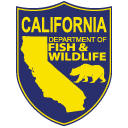Happy Autumn! For many of us, that means apple picking and pumpkin spice… everything! For both recreational and commercial fishermen along California’s southern coast, it signifies the start of spiny lobster fishing season. The 2022-2023 recreational spiny lobster season will open Saturday Oct. 1, 2022, at 6 a.m., followed by the commercial season which opens on Wednesday Oct. 5, both continuing through Wednesday March 22, 2023.
It’s also a great time to learn more about these gnarly creatures and their ecological and economic importance. The California spiny lobster (Panulirus interruptus) is a crustacean, a group of species that also includes crabs, shrimp, and barnacles. California spiny lobsters use all five pairs of legs for walking, unlike their familiar East Coast cousins, the American lobster (Homarus americanus), whose first pair of legs are modified into large claws. Also unlike the American lobster, which was recently listed as a species to avoid by Monterey Bay Aquarium’s Seafood Watch program, the California spiny lobster is considered a good alternative for consumers.

CDFW photo courtesy of J. Ugoretz
The spiny lobster’s common name comes from the sharp projections found on the sides of its abdomen, tail, and along its upper shell. The hard shell affords plenty of protection but makes growth a challenge; to increase in size, spiny lobsters must molt by shedding their shell and growing a new, larger one (this occurs about once a year for adults). The molting process makes it difficult to determine the spiny lobsters’ lifespan, but individuals have been known to live up to 30 years in the wild. The average size of adult spiny lobsters is about two pounds in weight and one foot long, though it is possible for them to reach up to 26 pounds and three feet long!
California spiny lobsters can be found from Baja California, Mexico, to California’s Monterey Bay, though very few are typically found north of Point Conception in Santa Barbara County. They prefer rocky habitats, often under the cover of kelp forests and surfgrass, in relatively shallow waters. They den in crevices during the day with other spiny lobsters to hide from predators like octopuses, California sheephead, and cabezon. If they do get into a sticky situation with a predator, spiny lobsters have a neat trick: they can intentionally detach an appendage to escape! Lost limbs can then slowly regenerate with each molt.
After sunset, spiny lobsters emerge from their dens to eat, traveling a quarter mile or more to scavenge for dead animals and detritus along the seafloor. They also munch on invertebrates like urchins, which helps to regulate the populations of these kelp-eating animals. This, in turn, helps maintain the kelp forest ecosystem for the hundreds of species that rely on it.
Not only do spiny lobsters play an important ecosystem role, they also have a ton of economic value for humans – 320 metric tons, to be exact! That was the weight of spiny lobsters brought to market by commercial lobster fishermen in California during the 2021-2022 season, according to California Department of Fish and Wildlife (CDFW) market receipt data. With an average price of $21.20 per pound, California’s commercial lobster fishery brought in over $14 million in revenue that season.
In California state waters, the spiny lobster fishery is managed by CDFW through the California Spiny Lobster Fishery Management Plan. The long-term viability of the commercial and recreational fisheries is safeguarded through a number of management measures, such as size and bag limits, closures during the spawning season, and gear restrictions. The commercial lobster season begins on the first Wednesday in October, while the recreational fishery opens at 6 am on the Saturday before the first Wednesday in October (giving recreational divers and hoopnetters an opportunity to take a few days before the commercial fishery opens); both close at midnight on the first Wednesday after March 15 the following year.
Commercial lobster gear consists of rectangular traps made of wire or plastic mesh. Recreational divers may take lobster using only their hands, and recreational hoop netters can catch lobster from boats, piers, or the shoreline. Everyone fishing for spiny lobsters recreationally must have a lobster report card; those 16 or older must also have a recreational fishing license. If you want to catch spiny lobster, it is also important to be aware of areas closed to fishing.
If your curiosity is piqued, you can learn more by reading the California Spiny Lobster Enhanced Status Report, found on CDFW’s Marine Species Portal. Here are a few more ways to get better acquainted with this interesting species:
- Commune with spiny lobsters at your local aquarium – check out exhibits at places like the Cabrillo Marine Aquarium in San Pedro.
- Visit them under the sea – lobster can be found throughout southern California, and California’s marine protected areas (MPAs) are open to divers who want to see spiny lobsters on their own turf. Try Swami’s State Marine Conservation Area or Casino Point State Marine Conservation Area. You could even participate in long-term kelp forest monitoring in MPAs by joining Reef Check California’s citizen science dive program.
- Try one on your dinner plate – the spiny lobster is prized for the delicate, sweet flavor of its versatile meat. Try it steamed, roasted, or grilled, and don’t forget to baste with plenty of butter!
- Catch one yourself – just make sure you know where, when, and how to fish for them. Or try a guided fishing excursion! And be sure to bookmark the Ocean Sport Fishing Interactive Web Map. This resource is designed to help you visualize sport fishing regulation boundaries, including MPAs and groundfish conservation area depth restrictions, on your mobile phone.
post by CDFW Staff








